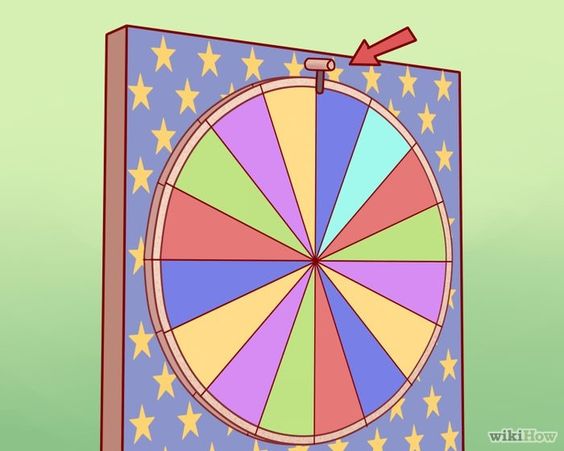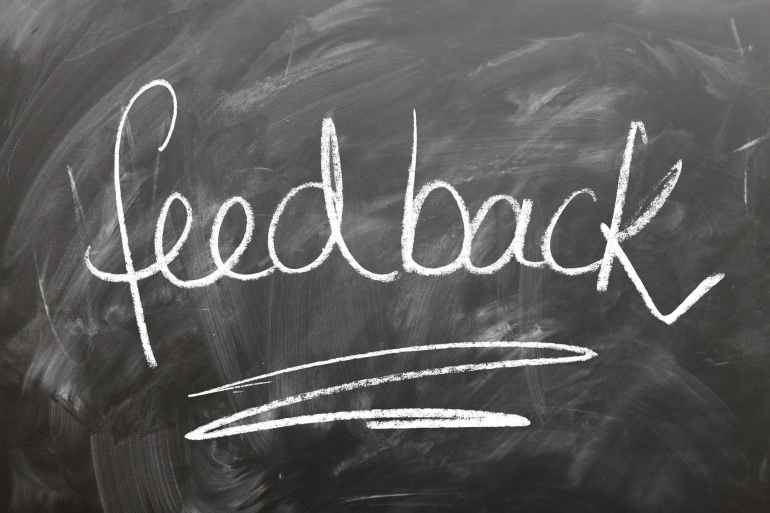Welcome everyone to my action plan for Assessment in Middle Grades Class EDMG 7100e. I encourage you to look around my site, you may find my ideas useful.


In my expedition to discover meaningful assessment, I have opened my thoughts to a plethora of writings, videos, and websites. I have read, watched, and listened to many important and useful ideas throughout my time in this class. In addition, I chose to assemble some of the ideas I found to be most important. Check out my plan to use them.
These are bits of how I intend to incorporate the ideas that I have acquired. This information will be incorporated into my teaching practice. I intend to do put this action plan into to play this school year.
Educators need to appreciate and understand how their students connect with the world around them and that this can make a difference when connecting with them.
I want my students to be creative and critical thinkers inside and outside of the classroom. In order to do so, I must look beyond the standard approaches to allow for a optimistic and collaborative effort to occur between teacher and teacher, teacher and student, teacher and parent. Check out these links and information on what inspired me.
To dig deeper into these ideas, “what we do doesn’t matter nearly as much as how kids experience what we do,”(Kohn, 2008). You may find the article useful It’s Not What We Teach, It’s What They Learn . I have enjoyed the insight I have gained from Alfie Kohn. I simply want to promote freedom within creativity for all educators. I find that we can make use of what we are given. I know the standards do not consider every student and situation, therefore, it is important for educators to do so. In one of the readings, I found a great analogy of educators and architects that Wiggins uses, “your clients are students. Your job is to develop client-friendly learning that also meets code” (Wiggins, 2013). This is the link The Standards and Creativity – Compatible In pondering this idea, I find that it’s not so much that standards are ineffective, it’s the fact that we need to fully understand what they mean and how we can utilize them creatively to promote learning. Kind of like the blueprints that architects use when designing a building.
This leads me to UbD. This design looks at the “Big Idea” the end in mind, the goal, the outcome. You start with your goal first and then move forward. In addition, It is also a great way for assessing if the students comprehend what you want them to learn as well as how you are performing as an educator. I intend to use this with my class possibly starting out with one or two units as my professor, Dr. Murphy suggested, and revising them, to embellish it and enhance these lessons with the UbD framework. I also have this youtube video that is very insightful and helped me better understand about backward planning/ backward design. Check it out! Understanding by Design

In addition to revising a unit or two with UbD in mind, I would also like to utilize a few of these ideas that I viewed in these videos: Sticks & Spoons This method encourages participation and student collaboration and making them feel safe in answering the question because they have team members helping them. Another idea is called
Roll the Dice for Participation This method allows the teacher to call on students to participate by utilizing tables that are arranged by sections and seat numbers. The dice are rolled to reinforced learning and sometimes these students numbers may be rolled more that once allowing for little time spent off task.
I am going to combined and modify these ideas and make my own personal engagement tool. I call it the “Wheel of Names”. I thought about how I could implement a few of these examples to actively engage my students in q & a sessions. So this is how it goes. I will use a wheel, that I cut in a circle from foam board, that is also attached to either a bulletin board or a square foam board. (just visualize) I will list the names of my students on this board. Here’s the fun part, every time I want my students to engage in conversation, provide thoughts, and answer questions, I will spin the board allowing it to stop on a students name. This student will need to be engaged in the session in order to participate and their name may be spun more than once. The point is, students will need to be actively engaged and listening in order to be prepared for whatever may be next. 
Another idea that I gained from a resource provided in this class, is to create my own form of Your Shining Moment In this video, it demonstrates a positive method for students to reflect upon their own performance. We all know how beneficial it is to engage in assessments and even more important is to engage in self-assessment. I have created my own form of this method. I decided to use this idea as their “ticket out the door.” The students would have 2 minutes or less to reflect upon the lesson or activity and share what they understood, connected with, built upon, suggestions for, or even what they may have struggled with. Then they would place their “ticket” which is just a index card or sheet of paper, into a box or bucket, for me to go through at the end of the day.
 This is just a simple way of allowing students to express themselves and a way for me to see where they are in their understanding and thoughts. From this ticket, I can assess my own methods and even use these tickets to engage my students in conversation. I don’t need to address the student specifically by calling on them, but rather keep the environment open, safe, and non-judgmental. I want my students to feel welcomed and know that its ok to make mistakes if they feel that have made them.
This is just a simple way of allowing students to express themselves and a way for me to see where they are in their understanding and thoughts. From this ticket, I can assess my own methods and even use these tickets to engage my students in conversation. I don’t need to address the student specifically by calling on them, but rather keep the environment open, safe, and non-judgmental. I want my students to feel welcomed and know that its ok to make mistakes if they feel that have made them.
When discussing mistakes, I find that I gained a new way of tackling them, that allows for all students to participate in discussing the problem without singling a student My Favorite No: Learning From Mistakes. The teacher demonstrates just how useful it is to check for understanding. The teacher was able to ask students to answer a question on an index card and then she would take these cards up, sort through them quickly and find the ones that were in correct. She starts by discussing what is correct in the problem before moving forward to discuss and break down the mistake. All students are encouraged to participate in the collaboration and discussion as well as working through the problem together without singling someone out. I find in my classroom, I will incorporate this idea by building a routine that will have everyone involved without making someone feel ridiculed for their mistake. I want to build confidence in my students. I want them to know they can ask anything and not be in fear of a mistake or what someone else may think. I know it is easier said than done, but I will implement this idea from day one, this way the students will be able to adjust and feel comfortable in sharing their ideas.
These tools lead me to my next idea that I will incorporate in my classroom. I would like to include Wormeli stating that “the best formative assessment is descriptive feed back”, (Wormeli, 2010). Check out his video Rick Wormeli: Formative and Summative Assessment He makes really great points about descriptive feedback including summative and formative assessment. In addition to discussing assessment, Grant Wiggins states, ” In theory, I would define ‘formative’ assessment as “useful feedback with an opportunity to use that feedback” to perform optimally on later summative assessments,” (Wiggins, 2011). If you would like to read more about his ideas on assessments check this link out Formative vs summative assessment – and unthinking policy about them I will keep both authors ideas in mind when creating ongoing assessments and check-points for my students. I will ask questions and assess similar to Wormeli’s ways,”What was the goal? Where are you in relation to it? What are we going to do to close that gap?,” (Wormeli, 2010). My personal twist is to allow my students to revise their work with the descriptive feedback that I give them. This will allow for ongoing learning and give the student the opportunity to gain new credit for their efforts. I find in doing so, we both can learn from each other. Its vital to combine feed back and opportunity to continue to successfully meet the needs of my students.

Lastly, I share this video in efforts to remind my readers as well as myself, that you may create a lesson that you find awesome, however, if your students do not share your views, what you have spent hours creating and perfecting cannot have the intended outcome you desired. This video shows a great example of a wonderful lesson that the teacher did not think through. As Kohn states you need “the willingness to imagine the student’s point of view” (Kohn, 2008). Here is the link When a Lesson Goes Wrong the teacher noticed that the packet of materials were overwhelming. When she saw this, she quickly adjusted the lesson based upon the students reactions. She was flexible and quick on her feet! She knew she needed to re-connect and modify her expectations of the lesson and students. This video allowed me to understand that I can still teach to heightened expectations, but I will need to adjust my lessons or activities so it will make since to my students. No matter how well I design or value my ideas about my assignments, I need to connect and create them with my students interest in mind so they can participate and share in meaningful learning.

Thanks for reading!
References:
Davis, A. (2017, July 12). Understanding by Design. Retrieved June 28, 2018, from https://www.youtube.com/watch?v=5YS6Xag6cXU
Kohn, A. (2018, June 21). It’s Not What We Teach, It’s What They Learn. Retrieved June 28, 2018, from https://www.edweek.org/ew/articles/2008/09/10/03kohn_ep.h28.html
My Favorite No: Learning From Mistakes. (n.d.). Retrieved June 28, 2018, from https://www.teachingchannel.org/videos/class-warm-up-routine
S. (2010, November 30). Rick Wormeli: Formative and Summative Assessment. Retrieved June 28, 2018, from https://www.youtube.com/watch?v=rJxFXjfB_B4
Roll the Dice for Participation. (n.d.). Retrieved June 28, 2018, from https://www.teachingchannel.org/videos/increase-student-participation-getty
Sticks & Spoons: An Engagement Strategy. (n.d.). Retrieved June 28, 2018, from https://www.teachingchannel.org/videos/sticks-spoons-student-engagement
When a Lesson Goes Wrong. (n.d.). Retrieved June 28, 2018, from https://www.teachingchannel.org/videos/when-lesson-plans-fail
Wiggins, G. (2011, August 25). Formative vs summative assessment – and unthinking policy about them. Retrieved June 28, 2018, from https://grantwiggins.wordpress.com/2011/08/25/formative-vs-summative-assessment-and-unthinking-policy-about-them/
Wiggins, G. (2013, April 19). The Standards and creativity – compatible. Retrieved June 28, 2018, from https://grantwiggins.wordpress.com/2013/04/10/the-standards-and-creativity-compatible/
Your Shining Moment. (n.d.). Retrieved June 28, 2018, from https://www.teachingchannel.org/videos/celebrating-student-achievement
